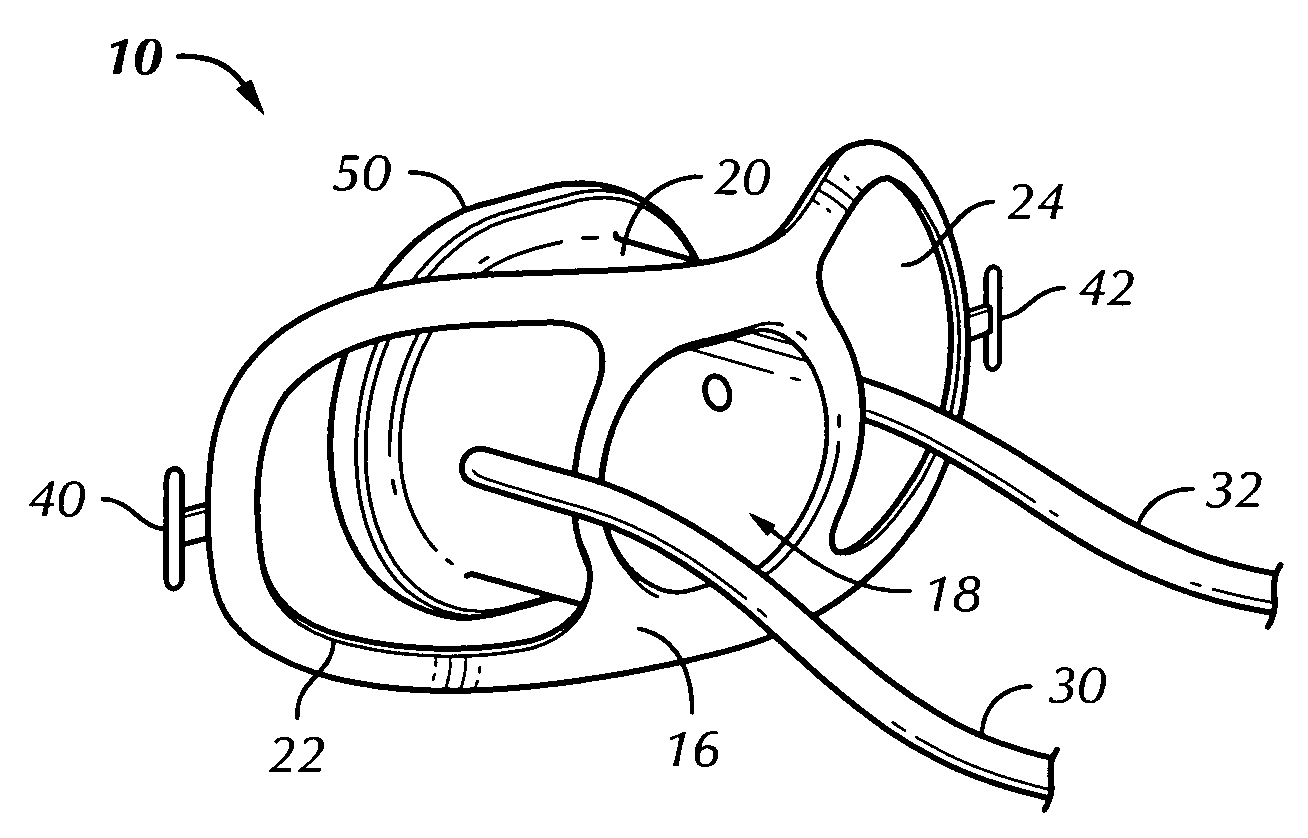Capnographic-oxygenating oro-fiberscopic biteblock
a capnographic and fiberscopic technology, applied in the field of bite blocks, can solve the problems of inability to use end-tidal carbon dioxide monitoring devices for monitoring ventilation during oral fiberscopic procedures, limited at best, and difficult to utilize end-tidal carbon dioxide monitoring
- Summary
- Abstract
- Description
- Claims
- Application Information
AI Technical Summary
Problems solved by technology
Method used
Image
Examples
Embodiment Construction
[0024] A capnographic-oxygenating oro-fiberscopic biteblock is disclosed. FIG. 1 is a front perspective view of a biteblock 10 positioned in a mouth of a patient 14 in the preferred embodiment of the present invention. The biteblock includes a main structure 16 having an opening 18 and an extension 20 extending from the main structure. Upon either side of the main structure are loops 22 and 24. The biteblock includes two tubes leading to the main structure. In addition, there is an inhalation tube 30 and an exhalation tube 32.
[0025]FIG. 2 is a front perspective view of the biteblock 10 of FIG. 1 removed from the patient's mouth in the preferred embodiment of the present invention. Each loop may optionally include strap holders 40 and 42. These strap holders allow a rubber strap (not shown) with holes to be used to cinch the biteblock around the patient's head to keep the bite block in place. The loops are sized and configured to allow manipulation of the biteblock by an monitoring ...
PUM
 Login to View More
Login to View More Abstract
Description
Claims
Application Information
 Login to View More
Login to View More - R&D
- Intellectual Property
- Life Sciences
- Materials
- Tech Scout
- Unparalleled Data Quality
- Higher Quality Content
- 60% Fewer Hallucinations
Browse by: Latest US Patents, China's latest patents, Technical Efficacy Thesaurus, Application Domain, Technology Topic, Popular Technical Reports.
© 2025 PatSnap. All rights reserved.Legal|Privacy policy|Modern Slavery Act Transparency Statement|Sitemap|About US| Contact US: help@patsnap.com



